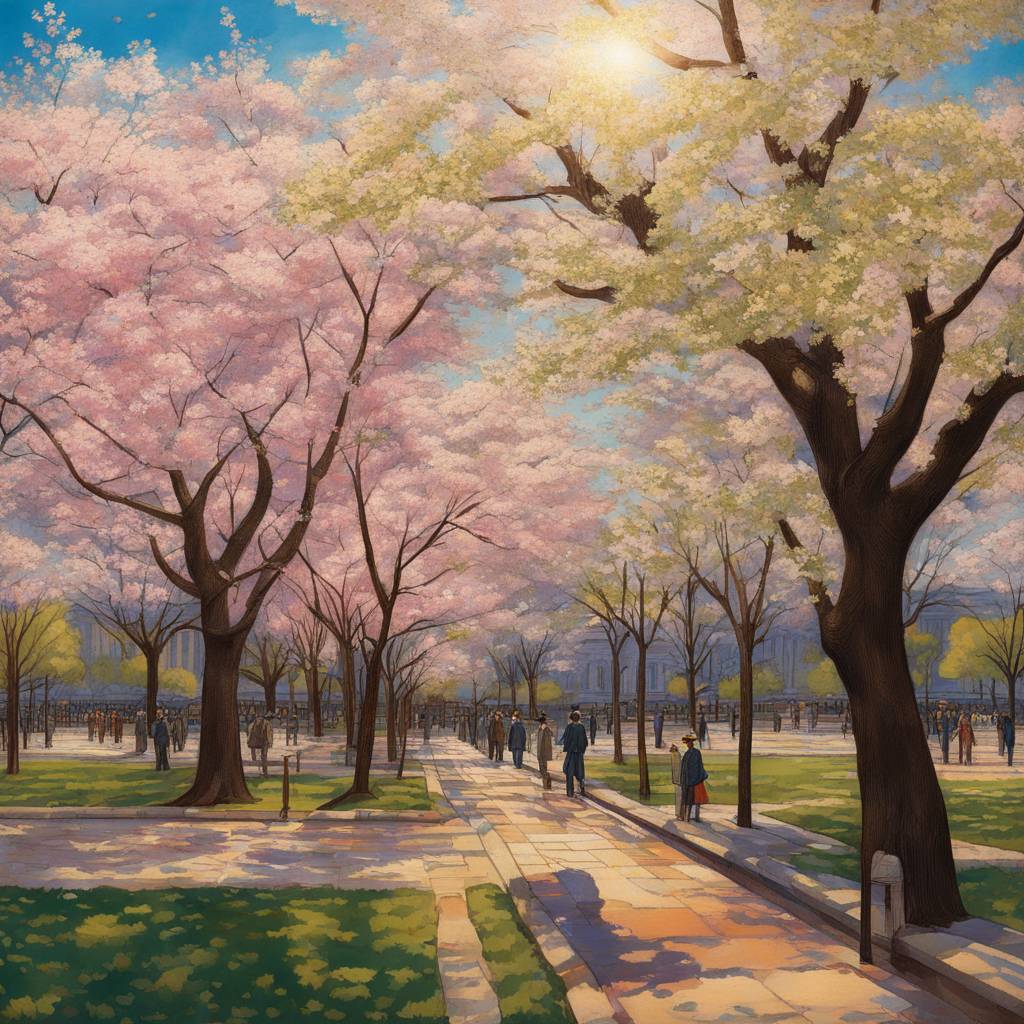On March 27, 1912, first lady Helen Herron Taft and other dignitaries planted the stunning cherry trees of Washington, D.C., a gift from Japan. The cherry blossoms, known as sakura, bloom spectacularly each spring in a cherished symbol of renewal, marking the eagerly anticipated highlight of spring tourism season in the nation’s capital. The original shipment of 3,020 cherry trees arrived on March 26, 1912, and were quickly planted around the Tidal Basin by officials from both sides of the Pacific Ocean. Eliza Ruhaham Scidmore, a journalist and photographer, championed the effort to beautify Washington, D.C., with cherry trees, contributing to the strong ties between the U.S. and Japan.
Cherry blossoms are famous for their radiant, delicate, and transient beauty and are deeply rooted in Japan’s history, culture, and identity. The United States and Japan have celebrated the blooming of cherry trees in solidarity for over 100 years. The two nations enjoyed strong relations at the start of the 20th century, marked by events such as the Taft-Katsura Agreement, which emphasized joint interests in the Pacific Ocean. However, this solidarity was shattered by Japan’s surprise attack on Pearl Harbor in 1941, leading to the vandalism of cherry trees in Washington, D.C., and the cancellation of the Cherry Blossom Festival during World War II.
After World War II, as the United States and Japan gradually became friends again, the cherry trees of Washington, D.C., became a symbol of international unity, hopes for peace, and a shared love of natural beauty. The National Cherry Blossom Festival became a major annual event, drawing visitors from around the world to witness the spectacular bloom of the cherry trees. Despite the challenges and conflicts that have tested the relationship between the two nations, the beauty of the cherry blossoms continues to serve as a reminder of the enduring friendship between the United States and Japan.
The cherry trees planted around the Tidal Basin in Washington, D.C., hold significant historical and cultural importance as a symbol of goodwill and unity between the United States and Japan. They also represent the enduring beauty of nature and the power of renewal and hope. The National Park Service notes that the Cherry Blossom Festival was canceled during World War II, but it has since become a cherished annual event that brings communities together to celebrate the beauty and symbolism of the cherry blossoms.
Despite vandalism and acts of aggression towards the cherry trees during times of conflict, the enduring friendship and reconciliation between the United States and Japan have allowed the National Cherry Blossom Festival to thrive and continue to be a source of joy and celebration for people of all backgrounds. The festival serves as a reminder of the resilience of nature, the importance of friendship and unity, and the power of cultural exchange and understanding. The stunning beauty of the cherry blossoms continues to captivate visitors and inspire a sense of peace and harmony in the heart of the nation’s capital.













